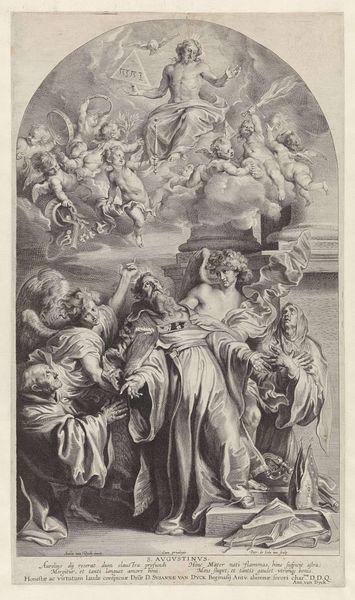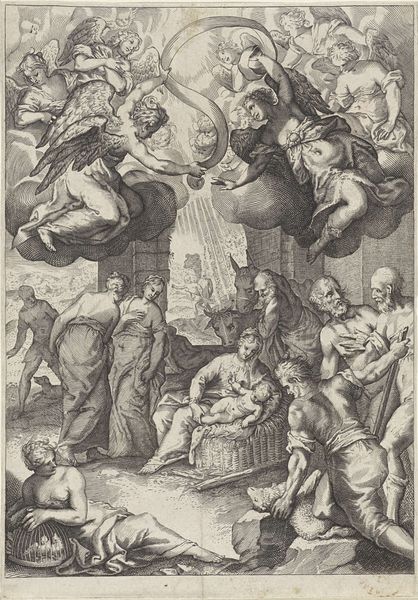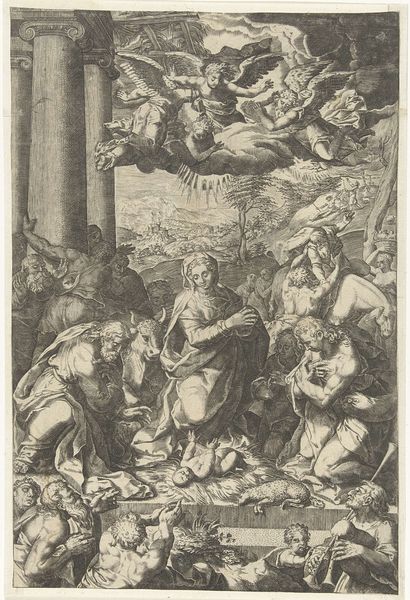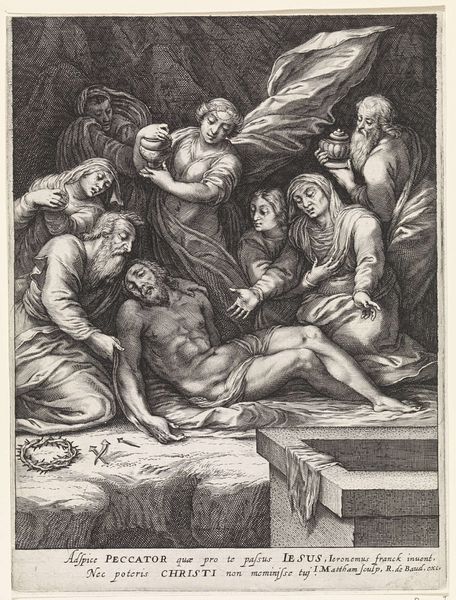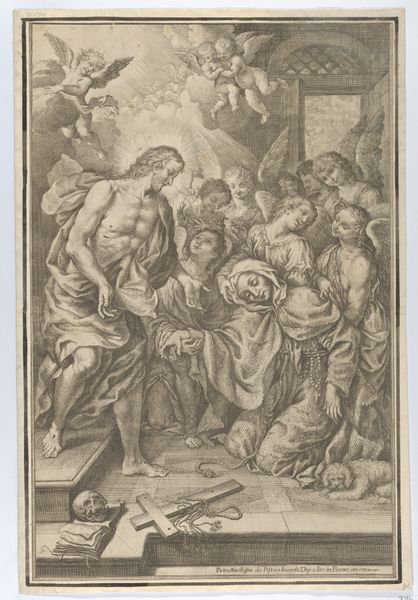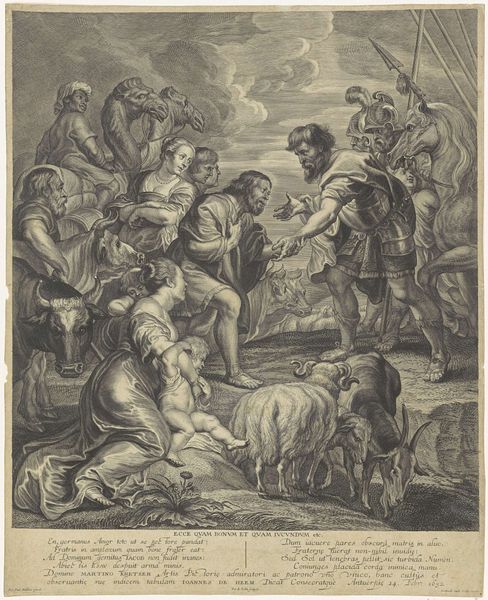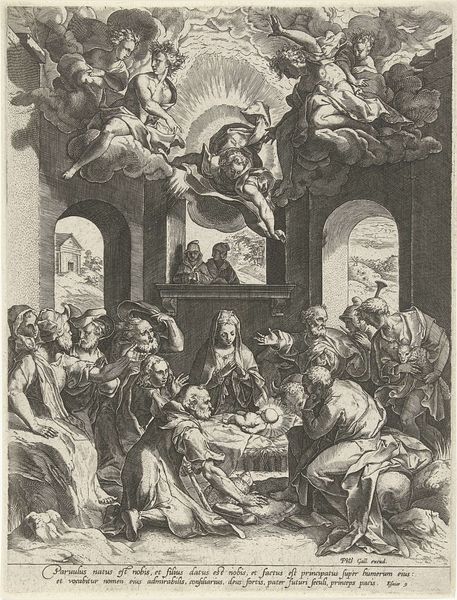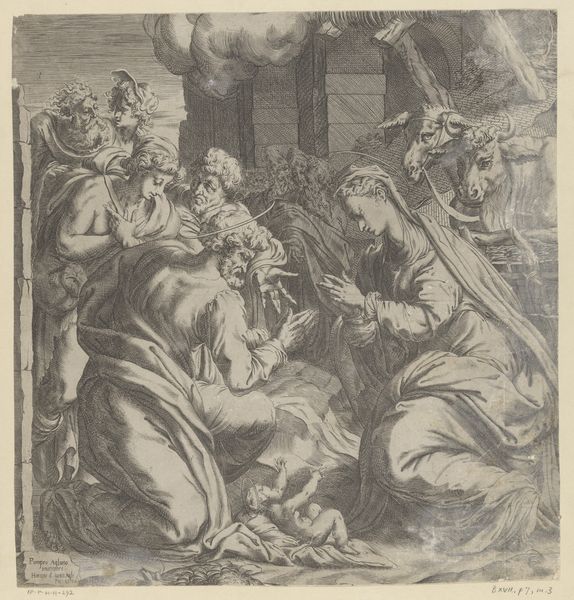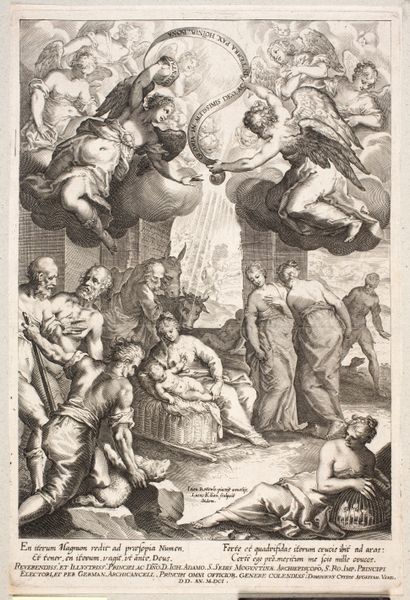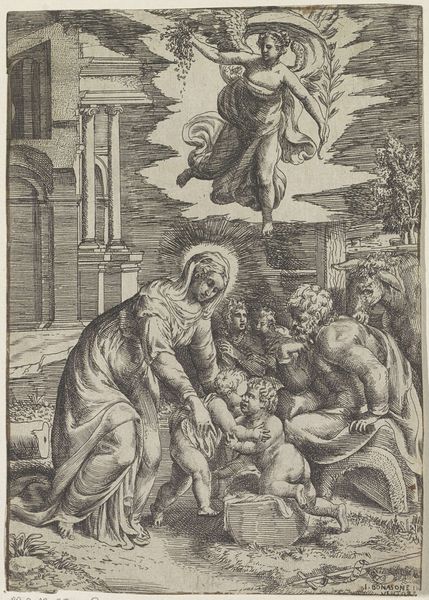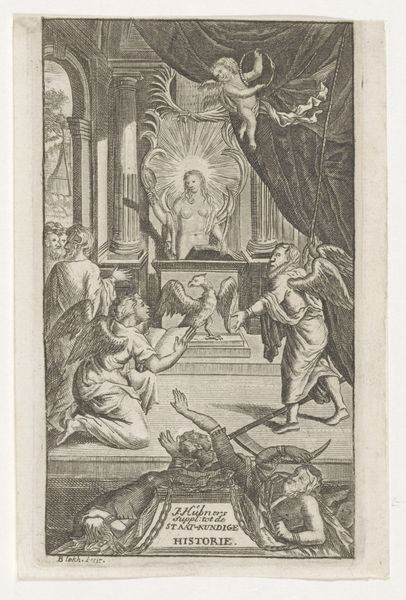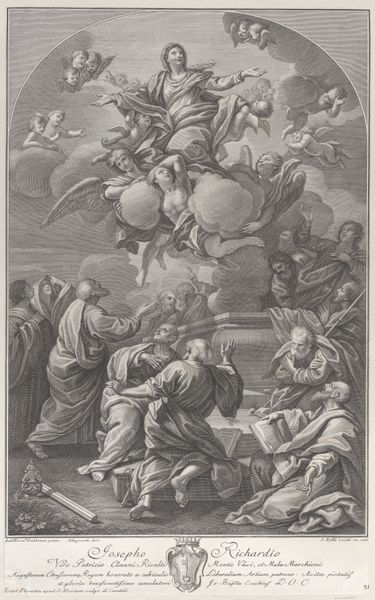
Visioen van de H. Augustinus van Hippo met de H. Monica en de H. Nicolaas van Tolentino 1642
0:00
0:00
etching, engraving
#
allegory
#
baroque
#
etching
#
figuration
#
line
#
history-painting
#
engraving
Dimensions: height 257 mm, width 139 mm
Copyright: Rijks Museum: Open Domain
Curator: This etching from 1642 by Arnold Loemans is entitled "Vision of Saint Augustine of Hippo with Saint Monica and Saint Nicholas of Tolentino." Editor: My first impression is of a dramatic and overwhelming sense of the Baroque. The way the figures are crowded together, reaching upwards, combined with that divine light above… It almost feels like a theatrical production. Curator: Absolutely. Loemans was working at a time when the Church was keen on visual displays of faith, countering Protestant critiques with powerful, emotive imagery. Consider how history painting often legitimized the power of patrons or the Church itself. Editor: The hierarchy is very clear. We have the earthly figures at the bottom, Saint Augustine seemingly in the center of it all, then ascending into the realm of God with the host of putti. I'm thinking about the symbolic representation of faith and divinity but, where's the challenge to the existing narratives of piety? Where's the dialogue questioning the role of the Church? Curator: It's fascinating that you frame it that way! In this period, questioning wasn't always overt, especially in religious works intended for public display. Yet, we can perhaps read tensions in the expressions of the figures or consider the very act of depicting such a vision as a challenge to established visual traditions. Loemans may be exploring the psychological intensity of faith and spiritual experience. Editor: Interesting… Looking at the women present, particularly St. Monica, how much agency are they really afforded? Curator: It's a complex point, but her presence alongside Augustine points to her influence and sanctity recognized within certain Catholic traditions, and Loemans gives her the grace that the Baroque commonly allots its central subjects. Her inclusion may be a subtle affirmation of female spiritual authority within a highly patriarchal context. Editor: Food for thought. Well, I’ve definitely gained a richer understanding of the artistic intention as the convergence of spiritual authority and social message, and as the product of its cultural setting. Curator: Yes, situating such artworks within broader narratives is essential. The historical context is so often key.
Comments
No comments
Be the first to comment and join the conversation on the ultimate creative platform.
